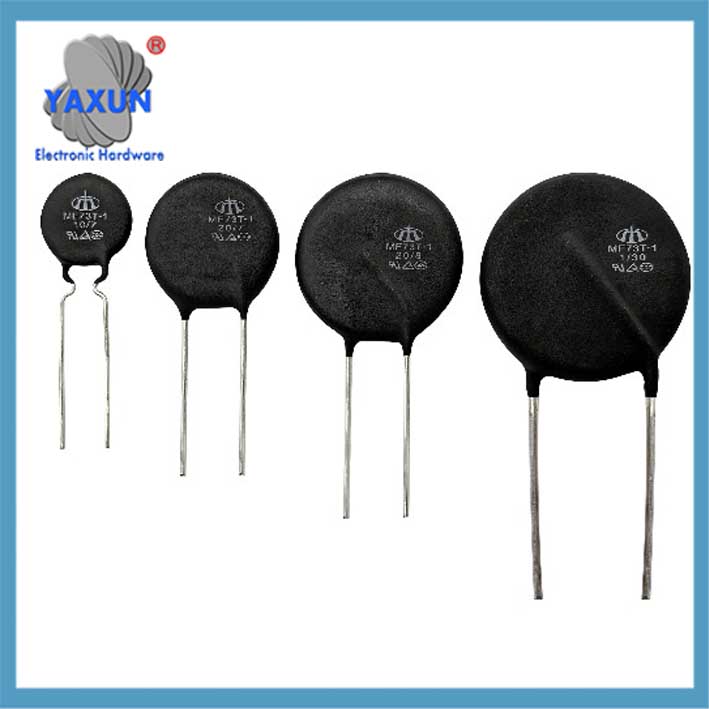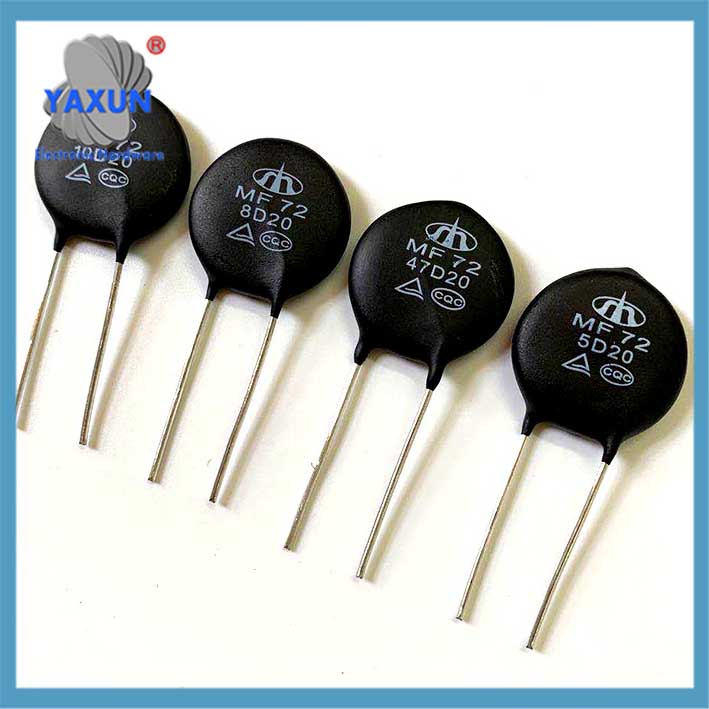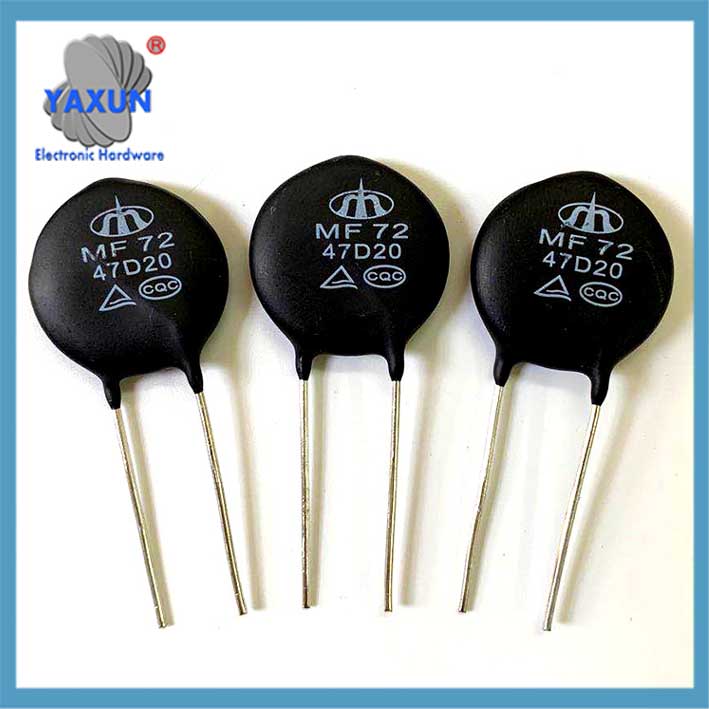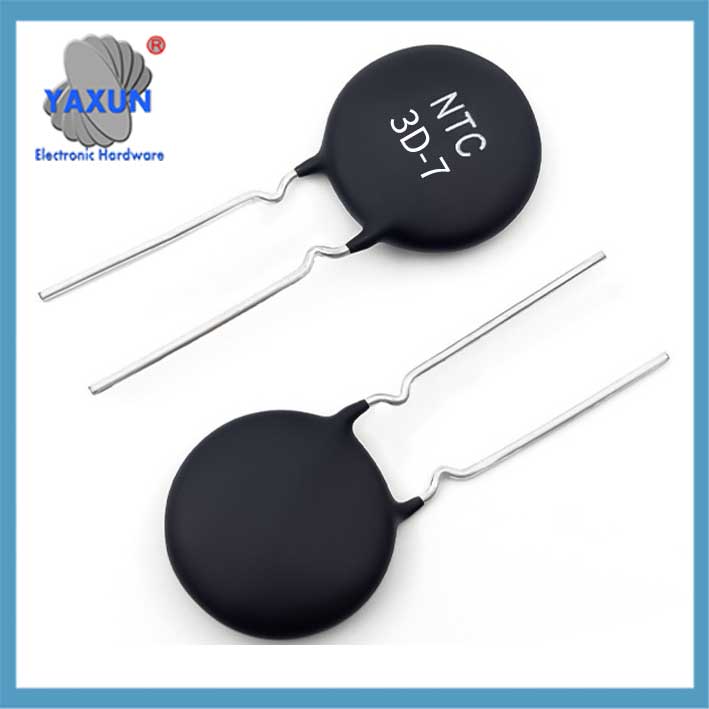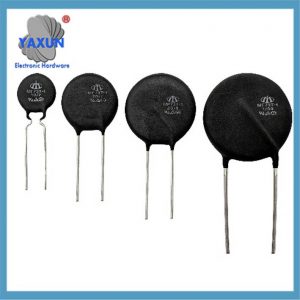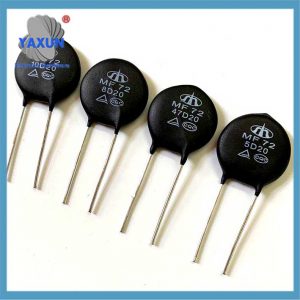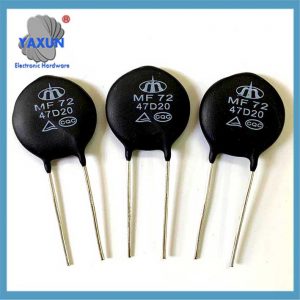Categorie di prodotti
- fusibile termico 32
- fusibili a montaggio superficiale 12
- termistore 36
- Portafusibili per montaggio su PCB 27
- Cablaggio 6
- Portafusibili a lama 17
- termostato 50
- Fusibile elettrico 24
- Sensore di temperatura automobilistico 7
- Interruttore termico 22
- Portafusibili 36
- Sensore di temperatura 75
- Interruttore termico 68
- Fusibile per auto 20
- Fusibili imbullonati 8
Tag dei prodotti
Applicazione e selezione dei termistori di potenza
Cos'è un termistore di potenza? Un termistore di potenza, noto anche come NTC di potenza o limitatore di corrente di spunto, è un componente progettato per sopprimere le correnti di spunto nei circuiti elettrici. Utilizza la caratteristica di autoriscaldamento di un coefficiente di temperatura negativo (NTC) termistore per limitare le correnti elevate che possono aumentare quando un circuito è acceso.
Termistore di potenza (tipo NTC a coefficiente di temperatura prevalentemente negativo) è un componente chiave per sopprimere i picchi di corrente nei circuiti elettronici. I suoi parametri principali, i punti di selezione e gli scenari applicativi sono i seguenti:
IO. Funzioni e principi fondamentali
Soppressione della corrente di picco
Al momento dell'avvio dell'alimentazione, il valore della resistenza NTC collegata in serie nel circuito di ingresso è elevato, che può limitare la corrente di picco; dopo l'accensione, la resistenza diminuisce rapidamente a causa del calore (il consumo energetico può essere ignorato), garantire il funzionamento stabile dei circuiti successivi.
Caratteristiche di temperatura negative
Il valore della resistenza diminuisce esponenzialmente con l'aumentare della temperatura: R(T)=R0⋅eB⋅(1T−1T0)R(T)=R0⋅eB⋅(T1−T01) (R0R0 è il valore di resistenza a 25℃, BB è la costante materiale).
Come funziona:
Elevata resistenza iniziale:
Quando viene applicata per la prima volta l'alimentazione, un termistore di potenza ha un'elevata resistenza, che limita la corrente di spunto iniziale.
Riscaldamento autonomo:
Mentre la corrente scorre attraverso il termistore, genera calore, facendo diminuire la sua resistenza.
Diminuzione della resistenza:
La riduzione della resistenza consente al circuito di assorbire la corrente operativa necessaria senza il picco iniziale.
Vantaggi:
Protegge l'attrezzatura:
Limitando la corrente di spunto, i termostati di potenza prevengono danni a componenti e apparecchiature sensibili.
Riduce la perdita di potenza:
La diminuzione della resistenza attraverso l'autoriscaldamento riduce la perdita di potenza rispetto all'utilizzo di un resistore fisso.
Risparmio energetico:
La riduzione della perdita di potenza può portare a risparmi energetici in applicazioni come alimentatori a commutazione e altri dispositivi elettrici.
Ii. Parametri chiave e punti di selezione
| Parametri | Definizione e significato della selezione | Valore/intervallo tipico |
| Resistenza a potenza nominale pari a zero (R25) | La resistenza nominale a 5°C determina la capacità di soppressione dei picchi iniziali. Formula di calcolo: R25≈U2⋅IsurgeR25≈2⋅IsurgeU (UU è la tensione di ingresso, IsurgeIsurge è la corrente di picco) | Comunemente usato 2,5Ω, 5OH, 10Ω±(15-30)% |
| Corrente massima a regime | La corrente che può essere sostenuta a lungo a 25℃, deve essere maggiore della corrente di funzionamento del circuito | A seconda del modello 0,5A~decine di ampere |
| Resistenza residua | Il valore minimo di resistenza ad alta temperatura (come 100 ℃), influenzando il normale consumo energetico del circuito | Circa 1/10~1/20 di R25 |
| Valore b | Costante materiale (misurato a 25℃~50℃), determina la pendenza della curva resistenza-temperatura; un valore B elevato risponde rapidamente ma ha un costo elevato | 2000K~6000K |
| Costante di tempo termica | Indice di velocità di risposta, tipo di toppa (come SMD) può raggiungere i secondi | Guarnizione in vetro/filo smaltato per circa 10~60 secondi |
Nota: Esempio di identificazione del modello MF72-10D-9:
10: R25=10Ω.
D: Pacchetto dischi
9: 9diametro mm;
III. Scenari applicativi tipici
Apparecchiature di alimentazione: Soppressione delle sovratensioni in ingresso dell'alimentatore switching, UPS, adattatore;
Sistema di illuminazione: Protezione anti-shock del driver LED, zavorra, scatola di distribuzione dell'illuminazione;
Equipaggiamento industriale: Avviamento del motore, alimentazione industriale, strumento medico;
Hhousehold Appliances: Condizionatore d'aria, Protezione dall'avvio del compressore del frigorifero;
IV. Guida alla selezione e all'evitamento
Corrispondenza corrente
La corrente massima in stato stazionario deve essere maggiore di 1.5 volte la corrente di funzionamento effettiva per evitare il riscaldamento e il guasto continui.
Progettazione di dissipazione del calore
In scenari ad alta potenza, è necessaria una distanza sufficiente o una dissipazione del calore ausiliaria per evitare che un eccessivo aumento della temperatura causi una resistenza residua insufficiente.
Temperature estreme
L'intervallo di temperatura operativa è generalmente -55℃~+125℃. Modelli sigillati in vetro (resistente a 150 ℃) sono preferiti in ambienti ad alta temperatura.
V. Confronto di pacchetti e prestazioni
| Tipo di pacchetto |
Vantaggi | Scenari applicabili |
| Resina epossidica | Basso costo, buona impermeabilità | Elettrodomestici, alimentatori ordinari |
| Confezione in vetro | Resistenza alle alte temperature (>150℃), risposta rapida | Attrezzature industriali, elettronica automobilistica |
| Tipo a montaggio superficiale (SMD) | Piccola dimensione, adatto per PCB ad alta densità | Modulo di potenza compatto |
Mancia: Sii cauto negli scenari di cambio frequente – L'NTC potrebbe perdere la capacità di soppressione dei picchi quando il raffreddamento insufficiente è insufficiente. In questo momento, è possibile collegare un bypass relè parallelo.
Contattaci
Aspetto la tua email, ti risponderemo entro 12 ore con le preziose informazioni di cui avevi bisogno.
 English
English Afrikaans
Afrikaans العربية
العربية বাংলা
বাংলা bosanski jezik
bosanski jezik Български
Български Català
Català 粤语
粤语 中文(简体)
中文(简体) 中文(漢字)
中文(漢字) Hrvatski
Hrvatski Čeština
Čeština Nederlands
Nederlands Eesti keel
Eesti keel Suomi
Suomi Français
Français Deutsch
Deutsch Ελληνικά
Ελληνικά हिन्दी; हिंदी
हिन्दी; हिंदी Magyar
Magyar Bahasa Indonesia
Bahasa Indonesia Italiano
Italiano 日本語
日本語 한국어
한국어 Latviešu valoda
Latviešu valoda Lietuvių kalba
Lietuvių kalba македонски јазик
македонски јазик Bahasa Melayu
Bahasa Melayu Norsk
Norsk پارسی
پارسی Polski
Polski Português
Português Română
Română Русский
Русский Cрпски језик
Cрпски језик Slovenčina
Slovenčina Slovenščina
Slovenščina Español
Español Svenska
Svenska ภาษาไทย
ภาษาไทย Türkçe
Türkçe Українська
Українська اردو
اردو Tiếng Việt
Tiếng Việt
